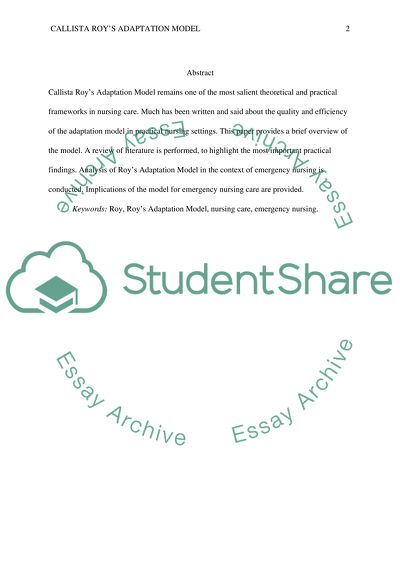Cite this document
(“Callista Roys Adaptation Model: Implications for Emergency Nursing Research Paper”, n.d.)
Callista Roys Adaptation Model: Implications for Emergency Nursing Research Paper. Retrieved from https://studentshare.org/nursing/1434109-callista-roys-adaptation-model-implications-for-emergency-nursing
Callista Roys Adaptation Model: Implications for Emergency Nursing Research Paper. Retrieved from https://studentshare.org/nursing/1434109-callista-roys-adaptation-model-implications-for-emergency-nursing
(Callista Roys Adaptation Model: Implications for Emergency Nursing Research Paper)
Callista Roys Adaptation Model: Implications for Emergency Nursing Research Paper. https://studentshare.org/nursing/1434109-callista-roys-adaptation-model-implications-for-emergency-nursing.
Callista Roys Adaptation Model: Implications for Emergency Nursing Research Paper. https://studentshare.org/nursing/1434109-callista-roys-adaptation-model-implications-for-emergency-nursing.
“Callista Roys Adaptation Model: Implications for Emergency Nursing Research Paper”, n.d. https://studentshare.org/nursing/1434109-callista-roys-adaptation-model-implications-for-emergency-nursing.


